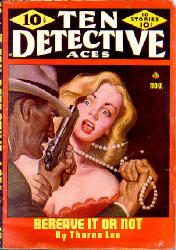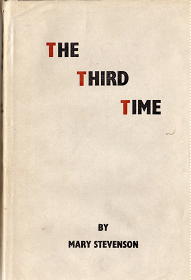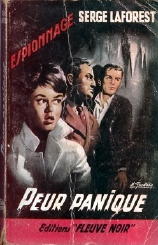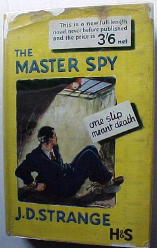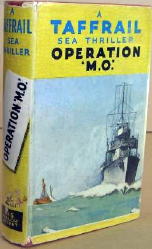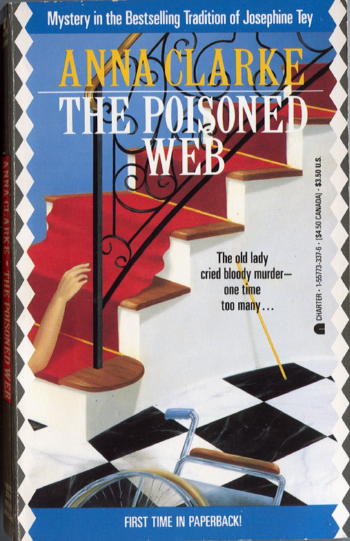December 2007
Monthly Archive
Sun 16 Dec 2007
Continuing in Part 9 this evening, but shifting slightly downward in the alphabet to the R’s. I imagine that the name of the first entry will produce a number of hits to this blog, but he is not he, and in fact was a she. The other authors produced a nice balance between those about whom much information was obtainable, and those about whom essentially nothing was found. Help if you can.
REEVE, CHRISTOPHER. Pseudonym of Dorothy Anna Maria Webb, 1900?-1985?, q.v. Add full name of author and tentative dates. She wrote seven mystery novels between 1929 to 1948 under this pen name, five of them eventually published in the US. All are included in the (Revised) Crime Fiction IV. The jacket for one of them is shown below (Morrow, US, 1930). A review of The Ginger Cat, touted on the cover, was reviewed in The Harvard Crimson, November 9, 1929.
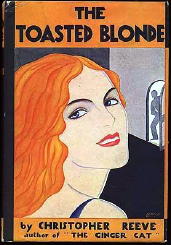
REYNOLDS, FATHER BRAD (RICHARD), S. J. 1948- . Add middle name and year of birth. A Jesuit priest presently living in Portland OR. Lived at one time in Alaska; has written over 300 articles published in National Geographic, America, Alaska and American Scholar etc. In addition, the author of four mystery novels included in the (Revised) Crime Fiction IV. See below. Series character in each: Father Mark Townsend, S. J., also a Jesuit priest.
Cruel Sanctuary. Avon, pb, 1999. Setting: Washington state.
Deadly Harvest. Avon, pb, 1999. Setting: Washington state.
A Ritual Death. Avon, pb, 1997. Setting: Washington state.
The Story Knife. Avon, pb, 1996. Setting: Alaska.
RICE, ROBERT. 1926-2000? Add tentative year of death. Author of one novel included in the (Revised) Crime Fiction IV. See below.
Mongrel Sabbath. Excalibur Press, UK, pb, 1995.
RICH, NICHOLAS. 1916?-1984? Add tentative dates. Author of three espionage thrillers included in the (Revised) Crime Fiction IV. See below. Series character in each: Adam Hood.
The Blane Document. Robert Hale, UK, hc, 1972. Setting: Australia.
The Seajet Spies. Robert Hale, UK, hc, 1973. Setting: Australia.
Spy Now, Pay Later. Robert Hale, UK, hc, 1972.
RICHARDS, C(ECIL) J(OHN). 1894?-1989? Add tentative dates. Author of one short story collection included in the (Revised) Crime Fiction IV. See below.
No Buses Running. Warren, UK, hc, 1956. Story collection, some criminous. Setting: Burma.
RICHARDSON, GEOFFREY. 1929-2003. Add year of death. His ‘second career’ was as an author of books about Richard III and the War of the Roses; one of these novels is included in the (Revised) Crime Fiction IV. See below.
The Deceivers. Baildon Books, UK, hc, 1997. Setting: London, 1480s. [A radical solution for the puzzle of who killed the Princes in the Tower.]
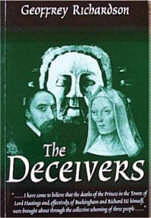
RICHARDSON, H(ENRY) M(ARRIOTT). 1876-1936. Add confirmed year of birth plus year of death. Born in Hanley, Stoke-on-Trent; educated in private schools; journalist, editor, leader writer, drama critic, playwright; a founder of the International Federation of Journalists. Author of several plays and two crime novels included in the (Revised) Crime Fiction IV. See below.
The Rock of Justice. Hutchinson, UK, hc, 1928.
The Temple Murder. Hutchinson, UK, hc, 1926.
WEBB, DOROTHY ANNA MARIA. 1900?-1985? Add full name and tentative dates. Pseudonym: Christopher Reeve, q.v. Born in Leicestershire; editor and reader for various publishers; living in South Kensington in the 1930s.
Sun 16 Dec 2007
Posted by Steve under
Covers[3] Comments
Once again, I don’t have a name to go with the artwork on this cover. I’ve shown this book to a number of people, and not many of them remember that Bantam ever published James Bond’s adventures. Everybody remembers the Signet books, of course, since they came out when Bond’s popularity was the highest, and there’s a slew of those around.
Fleming died in 1964, and this book came out in 1971. Even though the movies were still going strong — weren’t they? — I don’t think the Bantam editions sold well. I almost never see them anywhere myself, and I doubt that I have a full set. (Assuming, that is, that Bantam did a full set.)
BANTAM, paperback reprint, May 1971. Hardcover edition: Macmillan, March 1954. UK hardcover: Jonathan Cape, 1954. Also published in paperback as You Asked for It, Popular Library, 1955. Other paperback edition: Signet, February 1960.
From the back cover:
Millions of readers and countless filmgoers the world over have met British Secret Service agent James Bond — 007 — the superhero with an enormous appetite for the good things in life — food, women and international intrigue.
In Casino Royale, 007 faces one of his keenest adversaries, the Communist agent Le Chiffre, across the gaming tables of a famous French casino. The game is baccarat; the stakes are high: life and death.
Read the James Bond thriller From Russia, With Love. A Bantam Book.
Sat 15 Dec 2007
Posted by Steve under
Authors ,
Covers[5] Comments
I might be able to make a reasonable guess as to who the cover artist is, but since there’s no indication and I’m not sure, I’ve decided not to make myself look foolish. Philip Race was the pen name of E. M. Parsons; he wrote three crime fiction novels under this name, the other two for Gold Medal; and one as Parsons, that one for Avon.
HILLMAN 179. Paperback original, 1960.
From the back cover:
Johnny was just a crap game hustler, but when he blew into town they pegged him wrong. The cops said, “Killer,” and slugged him simple. “Lover,” the rich gal said, and got him even worse mixed up. Next came the ex-striptease queen with the heart of gold or pewter, and the Happiness Boys from the Syndicate…
All Johnny had going for him was fast pair of legs, a faster set of wits, and just maybe, the one female around who could be counted on to win it or lose it for keeps. A fickle broad named Lady Luck.
Fri 14 Dec 2007
I think we had more snow yesterday afternoon and evening than we did all last winter. It was well over a foot of the white stuff. After cleaning up the last bit of it from the driveway this morning, I returned to Part 9 of the Addenda and worked in the P section. Don Pendleton is obviously the best known author of this particular grouping, but the others seem to have been interesting people too.
PATTINSON, JAMES. 1915- . Prolific British author of approximately 100 mystery thrillers included in the (Revised) Crime Fiction IV, plus five published after 2000, including one scheduled for 2008. One of his earlier novels (Hale, 1968) is shown immediately below:
Cordley’s Castle. Robert Hale, UK, hc, 1974. Add setting: Arizona.
PAVILLARD, STANLEY SEPTIMUS. 1913-1997. Add year of death. Born in the Canary Islands; founder and director of the British American Clinics Las Palmas, 1956-89. Captured by the Japanese in Singapore early in World War II; wrote of his experiences in Bamboo Doctor. After developing partial blindness in later life, dictated a novel also related to his captivity, a book included in the (Revised) Crime Fiction IV. See below.
Enemy No. 19. Edinburgh, Scotland: The Pentland Press, hc, 1997. Setting: Far East. “One is apt to forget there was also a Holocaust in the Far East as well as Europe.”
PAYNE, EVELYN. 1907-1977? Author of one mystery novel included in the (Revised) Crime Fiction IV. See below.
Held Open for Death. Arcadia House, hc, 1958. Add setting: El Paso TX. Leading character: fledgling real estate agent Tillie Latimer. [For a review of this book, see the previous post.]
PEARSON, JOHN. 1930- . Lives in London; author of two novelsl [FOOTNOTE] included in the (Revised) Crime Fiction IV, plus one fictional “biography.” See below. This now constitutes the author’s completely revised CFIV entry:
Delete: Dragon’s Play. [Stoddart, Canada, hc, 1987.] The book does not appear to exist.
Add: Gone To Timbuctoo. Collins, UK, hc, 1962. Setting: Africa.
James Bond: The Authorized Biography of 007. Sidgwick & Jackson, UK, hc, 1973. Wm. Morrow, US, hc, 1973. SC: James Bond.
The Kindness of Dr. Avicenna. Macmillan, UK, hc, 1982. Holt Rinehart & Winston, US, hc, 1982. Setting: Rome. [A Prince gets kidnapping insurance through Lloyd’s and soon disappears from his palazzo in Rome.]
PENDLETON, DON(ALD EUGENE). 1927-1995. As the creator of Mack Bolan, or “The Executioner” series, generally perceived as the father of the modern action-adventure novel. The first Bolan book was in 1969; after 1980 other authors took over the writing, but the books still appeared under Pendleton’s name.
Death Squad. Vivid Comics, 1996. Graphic novel, with scripting by Pendleton’s widow, Linda Pendleton, 1942- , q.v. Art by Sandi Florea. [Note: Death Squad is the second “Executioner” novel; the first, War Against the Mafia, appeared earlier in a serialized comic book format: Parts One, Two and Three were adapted and scripted by Don Pendleton & Linda Pendleton, with art by Sandu Florea: Innovation Comics, 1993. Part Four did not appear after the publisher went out of business.]
PENDLETON, LINDA. 1942- . Add as a new author entry. See: Don(ald Eugene) Pendleton, 1927-1995.
[FOOTNOTE] 12-28-07. See Hank Reineke’s comment. This has prompted a complete overhauling of John Pearson’s entry. See this later post for more details.
Fri 14 Dec 2007
Posted by Steve under
ReviewsNo Comments
EVELYN PAYNE – Held Open for Death
Arcadia House; hardcover; c. 1958.
The author’s only mystery, nor is it one that’s particularly easy to find. There are two copies online that are both in the $30 range, and one other in Norway for $80 or so. I paid less than either asking price for mine, and – as long as you’re asking me my opinion – neither should you.
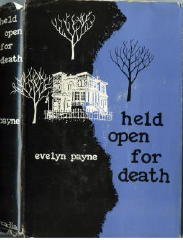
It starts out promising enough, with a heroine sleuth with an unusual occupation for, um, a heroine sleuth: that of real estate agent. There certainly must have been others, before and since, but at the moment, none seem come to mind. [FOOTNOTE.]
Tillie Latimer is her name, the locale is El Paso, and truth be told, when the book begins, Tillie’s been a real estate agent for only a couple of weeks. Her first big assignment on her own: holding an open house for the home next door to her mother’s, where Tillie still lives.
It proves to be a big success, so big that keeping track of incoming visitors proves impossible. This turns out to be a big problem when Granpa Tellfair, aged 89, and father of Miss Sadie, who owns the house, is later found dead in the basement, stabbed to death with a knife still in his back. Strangely enough, he also still has $1000 in his pocket. This is doubly strange. Since time he was once robbed, he never carried more than five dollars with him at a time.
Tillie had met Granpa during the open house, and as it so happens, while he managed to maintain his well-deserved status as a curmudgeon in his short conversation with her, he was also one of the more likable people who happened to stop by. The question is, who’d kill an old man like this, and why?
Going hand-in-hand with the mystery, there is also a strong romantic interest for Tillie in the person of Miss Sadie’s son Rick, the “town’s star juvenile delinquent for a few years,” now out of the Army and perhaps on his way to becoming a solid citizen. Nor is Rick the only one who is showing an interest in Tillie. Trying to place the book into its proper category, I am not sure whether the two or three more murders that occur qualify this detective yarn as a cozy or not, but if Agatha Christie’s books are cozies, then so is this one. And after thinking about it some more, I shall happily concede that it is, no matter what.
I mentioned Agatha Christie. That was a rather unfortunate reference, now that I think about it. While the author is obviously very familiar with the ins and outs of the real estate business, she’s also in over her head in making sure that the story keeps on going in the direction she wants it to. The characters are fun at first, but their lack of depth soon begins to tell. Soon after the halfway point, the many loose strands of the plot get tangled, cluttered and confused, and seemingly beyond repair. In wrapping things up, the author makes it clear she had a goal worthy of the telling in mind. It is the getting there that is the problem.
Everything that a good mystery should have is in this book. It’s just that the ingredients have been assembled – well, not badly, exactly, and I have not come up with a more positive way of saying this – but by an amateur, in a truest sense of the word. Without a stronger pro at the helm, to come to the point a little more quickly, this is little more than a “nice try” and/or a “might have been.”
[FOOTNOTE.] This is the review that was my springboard into creating a list of all the real estate agents who ever happened to become detectives as part of their occupational duties. Check it out here, a post made back in January of this year.
Wed 12 Dec 2007
First — this is Steve — some background information and a bit of an introduction. If you were to look Thorne Lee up in either print or CD version of Crime Fiction IV, by Allen J. Hubin, his entry would look like this:
LEE, THORNE; pseudonym of Thornton Shiveley; Born in Nebraska; in 1950s living in California and instructing in English and speech at a junior college; actor; writer under another name.
The Monster of Lazy Hook (Duell, 1949, hc) [California]
Summer Shock (Abelard-Schuman, 1956, hc) [Oregon]
or at least that’s how it appeared until Al sent me an update for him in Part 9 of the Revised CFIV. Not much, but at least an approximate year of birth for him:
LEE, THORNE. Thornton P. Shiveley, ca.1874- .
Following this, several months later, Al sent me an update correcting the spelling of the author’s last name, saying “There’s a Thornton P. Shively in the Mormon site with the right birth date, so I assume it’s he.”
If he was born in 1874 would have made him a little old to be teaching in the 1950s, but that’s hardly impossible.
But while doing a search for Lee on the Internet, I found an eBay seller who was offering a signed copy of The Monster of Lazy Hook. As part of the description she said, “Inscribed and signed on copyright page by author both as ‘Thorne Lee’ and Thornton T Shiveley.”
So we’re back to Shiveley, but where did the middle initial “T” come from?
We asked Victor Berch, who replied with the definitive answer. Al, this time, had the wrong fellow. Said Victor, “From what I can determine, Thornton T. Shively was the son of Thornton P. Shively. In the 1930 Census, he was listed as 17 years old, born in Nebraska.. His father Thornton Pickenpaugh Shively was an accountant, born in Virginia. Thornton T. was born Feb. 26 1913 in Nebraska and died June 21, 1980 in Santa Cruz, CA.
And as an immediate consequence, the basic online entry for Lee/Shively now looks like this:
LEE, THORNE. Pseudonym of Thornton T. Shively, 1913-1980.
In the meantime I’d discovered that Lee had written extensively for the pulp magazines, so I sent this information on to Bill Pronzini. At the same time I asked if had copies of both of Lee’s books, and whether he’d read either of them. Indeed he had, and I’ll let him take over from here:
THE COMPLEAT THORNE LEE, by Bill Pronzini
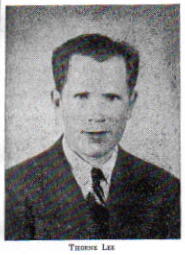
He began writing during WW II. His first novel, The Fox and the Hound, about an amnesiac trying to find out who he is and whether or not he committed murder, was published complete and unabridged in the August 1944 issue of Mammoth Detective (from whence came the author’s bio below). Unlike some of other full-length novels which first appeared in the Mammoth mags, it was never published in book form. From 1944 to 1949 he contributed more than 30 tales to Black Mask, Dime Detective, New Detective, Doc Savage, The Shadow, S&S Detective Story, Ten Detective Aces, and other pulps. He also wrote a few stories for the sf mags of the period.
In Thorne Lee’s own words:
Peering into the remote and shady past of a mystery writer, you might expect to find a witches’ brew of dangerous living and dark adventure, but my own life story reads more like an afternoon recital at a ladies’ garden party. Any resemblance to excitement in my tales is purely accidental — or I should say, purely imaginary. I have yet to look down the wrong end of a gun barrel — which is probably true of a lot of fire-breathing yarn-spinners. Well, we can’t all be Jack Londons.
“Born in Nebraska, married in Montana, and a daddy in Southern California” covers the high spots for me. I think my first interest in words began with a story called the The Enchanted Isle of Yew. That was all I read — just the one book, over and over. So far I haven’t been accused of writing the same story over and over, but I suppose that will come in time.
I first looked on writing with professional intent while editing a college weekly. About that time I wrote a musical comedy (book and lyrics) and was ruined for life. The show was one of those “local boy” affairs with a fat part for myself. On the road it ran four solid nights. I think the lyrics are funny, but for a different reason.
That brief fling as a Main Street Noel Coward plus an after-dinner speaking contest gave me the quaint idea that I should be a magazine humorist. Ha! ha!
… I topped off college graduation with a year in university theatre, where I almost flunked in playwriting. For a brief time I wavered between acting and free-lance writing. The choice was easy; chances were that either career I chose would be the wrong one.
Since then I’ve worked as everything from chauffeur to night clerk, to florist, to meter reader. So far I’ve managed to leave all jobs under my own power. A brief career as a school teacher was soon abandoned. The last straw was the day a tenth grader mistook me for a fellow pupil.
I write mystery stories for three reasons: (1) I like to read them; (2) a good share of the better writing being done (setting my own stuff tenderly aside) can be credited to mystery writers; (3) my first stories sold were mysteries.
My own reading tastes vary widely from Hilton to Hammett. I like my share of realism, but I don’t favor the theory that the supernatural and abnormal are out-of-date in mystery writing, or ever have been since Poe.
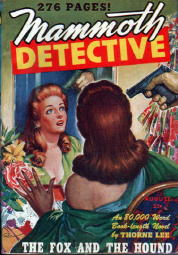
The Fox and the Hound is my first novel. I use a pseudonym for the reason that my own name is invariably misspelled or mispronounced, or both. Thorne Lee is an abbreviation based on the first and last syllables of my name.
I like to work in old, ragged clothes. As a writer I have found that desire easy to satisfy. My wife, Betty, says I am probably the only scarecrow to write a novel.
I’ve been falsely accused of favoring red-headed heroines because my four-year-old daughter, Susan Leigh, has golden red hair.
Our home is that place they write songs about, the San Fernando valley. I am working in an essential industry until the end of the war gives me “time to retire,” or until Uncle Sam looks with favor upon my bony physique. Even now I think I hear the old gentleman mumbling my name. Perhaps I’ll have that real-life adventure after all. If so, I know there will be a lot of good fellows with good intentions sharing that adventure.
The series of stories featuring the detective duo of crippled Julian Renard and his Watson, Roger Bannister, appeared solely in Doc Savage, 1945-47. Here’s the complete list, with issue dates
“The Shock Punch” — June 1945
“The Britannica Sock” — January 1946
“Who Rides a Tiger…” — April 1946
“The Man Who Got Away With It” — August 1946
“The Monster of Lazy Hook” — December 1946
“There Was an Old Shoe” — May-June 1947
“The Woman in the Attic” — July-August 1947
“The Ghost Hangs High” — September-October 1947
Thorne Lee also wrote a couple of pretty good hardcover mysteries:
THE MONSTER OF LAZY HOOK (Duell, Sloan & Pearce, Inc.: A Bloodhound Mystery; 1949) is a much altered expansion of the short story of the same title and features Renard and Bannister.
From the blurb on the inside jacket flap:
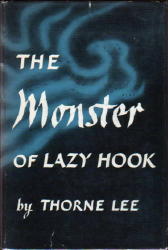 In swift succession, three men — all leading citizens of the little California coastal town of Lazy Hook — vanished without a trace. All three had been connected with the late Spencer Van Dyke, eccentric millionaire, who though he died of natural causes had managed to surround his death with many-sided mystery. What had Spencer Van Dyke done with the huge sum of cash withdrawn from his bank shortly before his death? What was the meaning of the fantastic poem he caused to be engraved on his marble gravestone? Why had he bequeathed the vast and dilapidated Van Dyke mansion to his hermit butler? Had he come from beyond the grave to spirit away Lyman Hobbs, his undertaker, Henri Picard, his lawyer, and Peter Ramsey, the local editor?
In swift succession, three men — all leading citizens of the little California coastal town of Lazy Hook — vanished without a trace. All three had been connected with the late Spencer Van Dyke, eccentric millionaire, who though he died of natural causes had managed to surround his death with many-sided mystery. What had Spencer Van Dyke done with the huge sum of cash withdrawn from his bank shortly before his death? What was the meaning of the fantastic poem he caused to be engraved on his marble gravestone? Why had he bequeathed the vast and dilapidated Van Dyke mansion to his hermit butler? Had he come from beyond the grave to spirit away Lyman Hobbs, his undertaker, Henri Picard, his lawyer, and Peter Ramsey, the local editor?
These were the questions that were thrust at the strange pair of detectives who set out to solve the apparently insoluble. The two, crippled Julian Renard, mostly brains, and Robert Bannister, mostly brawn, found themselves in a peculiar and dangerous setup, and only their assorted but well-balanced gifts, together with a certain bit of luck, brought them through alive and entitled to the rewards they had been promised.
Thorne Lee’s is a fast-paced puzzler, with enough easy humor and unexpected romance to balance the grim and inevitable drama that envelops Lazy Hook and its citizens.
SUMMER SHOCK (Abelard-Schuman Ltd., 1956) is a good, unusual suspense novel that takes place at the Ashland, Oregon Shakespeare Festival (which is still being held annually and draws huge crowds). According to the author’s bio on the jacket, Shively acted in numerous plays put on at the festival, among them Richard II and King Lear. At the time the book was published he was living in Visalia, CA. and teaching at College of the Sequoias.
Once again, from the blurb from the inside jacket flap:
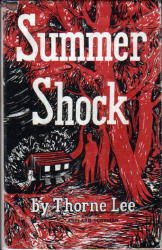 The very first reader of this book, when it was in manuscript form, started his report with this sentence: “This is a book that I don’t think you should get away from you.” We feel that the readers of the finished book will feel the same way about it.
The very first reader of this book, when it was in manuscript form, started his report with this sentence: “This is a book that I don’t think you should get away from you.” We feel that the readers of the finished book will feel the same way about it.
The Pacific Northwest is the setting, and the author’s description of the natural scenery and his use of it in the story, add much to the special flavor of the novel. The characters are all member of a semi-professional group of actors engaged in putting on a Summer Shakespearean festival. The theatrical background is completely authentic and the details of casting for the various plays are cleverly woven into the plot. (The theatrical material is completely fascinating in itself, but never gets in the way of the swiftly moving story which is full of suspense.)
It is impossible to summarize the plot without detracting considerably from the reader’s enjoyment — except to say that it is a psychological-suspense story. There are several murders, but this is not a murder-mystery. The reader can be fairly sure, from the very beginning, as to the identity of the murderer. It is the development of the murderer’s mental processes, and the effect this has on all the people around him, that holds our interest.
ADDITIONAL BIBLIOGRAPHY: PULP FICTION —
From the Cook-Miller index to Detective Pulps, along with Science Fiction, Fantasy, & Weird Fiction Magazine Index (1890-2006) by Stephen T. Miller and William G. Contento for the SF, plus a big assist from Victor Berch:
Bereave It or Not, Ten Detective Aces, Nov 1945
The Blood Runs Cold, Doc Savage, Sep 1948
The Britannica Sock [Bannister & Renard], Doc Savage, Jan 1946
A Corpse Slept Here, Dime Detective, Dec 1947
The Crooked House, Weird Tales, Nov 1942 [not by Thorne Lee; see the comments]
Dance Macabre, Ten Detective Aces, Mar 1948
Dead to the World, Ten Detective Aces, Nov 1947
Deadbeat, Doc Savage, Nov 1946
Death in the Groove, Dime Detective, Mar 1946
Dragnet for a Spy, FBI Detective Stories, Oct 1950
Dying to Kill, New Detective Magazine, Sept 1946
The Face of Fear, New Detective Magazine, July 1947
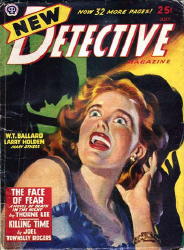
The Flesh Is Willing, Doc Savage, July 1946
The Fox and the Hound, Mammoth Detective, Aug 1944
The Ghost Hangs High [Bannister & Renard], Doc Savage, Sep-Oct 1947
Ghost Planet, Startling Stories, June 1943 [probably not by Thorne Lee; see the comments]
The Hanging Sisters, Chief Detective, Winter 1946
Headless Horseman, The Shadow, Aug 1945
I Thought I’d Die, New Detective Magazine, Mar 1946
If Anything Happens to Julia, Shadow Magazine, Feb-Mar 1948
It’s Been a Long, Long Crime, New Detective Magazine, July 1946
It’s in the Bag!, Dime Mystery, Mar 1947
Laughing on the Outside, Detective Story Magazine, Aug 1947
The Mad Dog of Lame Creek, Black Mask, Mar 1946
The Man Who Got Away with It [Bannister & Renard], Doc Savage, Aug 1946
The Man Who Lost His Shadow, Fantastic Adventures, June 1944
Married to Murder, Dime Detective, May 1947
The Merry Men of Mayhem, Detective Tales, Dec 1946
The Merry Widow Murder, Detective Book Magazine, Fall 1949
The Monster of Lazy Hook [Bannister & Renard], Doc Savage, Dec 1946
Murder on My Shoulders, New Detective Magazine, Mar 1947
The Mutilator, Detective Book Magazine, Sum 1949
No Body But Me!, New Detective Magazine, Jan 1947
Possession, Shadow Mystery, Fall 1948
The Reluctant Leopard, Doc Savage, May 1945
The Shock Punch [Bannister & Renard], Doc Savage, June 1945
Some Call It Murder, Detective Story Magazine, Aug 1946
Stairway Going Down, Dime Detective, Sept 1945
There Was an Old Shoe [Bannister & Renard], Doc Savage, May-June 1947
The Whisperer, Dime Detective, Mar 1945
The Whispering Wine, Weird Tales, Mar 1943 [not by Thorne Lee; see the comments]
The Will to Die!, Dime Detective, Apr 1951
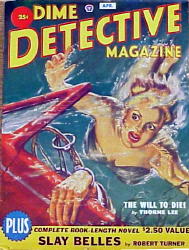
Who Rides a Tiger… [Bannister & Renard], Doc Savage, Apr 1946
The Woman in the Attic [Bannister & Renard], Doc Savage, July-Aug 1947
Wed 12 Dec 2007
When this book was included in the Addenda to the Revised Crime Fiction IV — see the book immediately preceding this one — neither Al Hubin nor I knew very much about it. But I did find one copy offered for sale on the Internet, and an inquiry to the seller produced the following update. I certainly don’t mind giving them a small plug in return: Books Found Fast specializes in rare books, out-of-print and used books, second-hand children’s books of the 1950’s onwards and other hard-to-find books.
STEVENSON, MARY. Add as a new author entry.
The Third Time. J. R. Mott, UK, hc, 1961. “In this, her second book portraying the current position of contemporary social problems, Mary Stevenson discusses the very important question of criminal mental stability.” The author’s first book was entitled Red Beret. [Note: Thanks to the folks at Books Found Fast in the UK for providing both the cover image below and the short synopsis of the story line.]
Tue 11 Dec 2007
This afternoon I was working in Part 21, primarily in the S’s, but with the usual diversion or two:
ARCOUET, SERGE. 1916-1983. Add as a new author’s entry. Pseudonym: Serge Laforest, q.v.
LAFOREST, SERGE. Pseudonym of Serge Arcouet, 1916-1983, q.v. Correction of real name. Under this pen name, the author of many crime & espionage novels published only in French, one of which is shown below. As “Terry Stewart,” q.v., Arcouet was the first French author to be published in Gallimard’s ‘Série noir.’ One title in an English translation appears in the (Revised) Crime Fiction IV, included here below the image.
The Intruder. International Publishers, UK, pb, 1969. Translation from the French. Setting: Alaska. [The book is a two-in-one edition, the other novel being The Man of the Avenue, by F. Dard, aka San Antonio.]
STEVENSON, MARY. Add as a new author entry.
The Third Time. Mott, UK, hc, 1961.
STEWART, TERRY. Delete this entry. This is not the real name of Serge Laforest, q.v., as previously attributed, but another pseudonym of Serge Arcouet, q.v. No works by the author have been published in English under this byline.
STRANGE, J. D. Author of one work of espionage fiction included in the (Revised) Crime Fiction IV. See below.
The Master Spy. Hodder & Stoughton, UK, hc, 1932. Add setting: England, Germany, Switzerland.
STRANGE, NORA K. Full married name: Nora Kathleen Begbie Strange Stanley, 1884-1974. Born in India; married Edward Stanley, 1922. Correct birth date & add year of death. Secretary in Nairobi and Kenya, 1913-19; one of first women to work in business offices in East Africa. Prolific romance novelist with many books published between 1924 and 1970; Kenya is the setting for many of them. One novel having criminous content is included in the (Revised) Crime Fiction IV. See below.
According to Jill. Stanley Paul, UK, hc, 1926.
TAFFRAIL. Pseudonym of Henry Taprell Dorling, 1883-1968. A captain in the British Royal Navy & author of many sea stories, many with criminous content. Some thirty titles are included in the (Revised) Crime Fiction IV; one of these is shown below. [Note: A taffrail is the railing around the stern of a ship often ornately carved.]
-Euridice. Hodder & Stoughton, UK, hc, 1953. Add setting: Java.
Tue 11 Dec 2007
Posted by Steve under
CoversNo Comments
The following paperback was published in the dark Middle Ages when cover artists were seldom identified. There’s not even a hint of a signature to use as a clue. As far as the cover is concerned, look closely. This is one that tells a complete story, in and of itself.
CHARTER. Reprint paperback, May 1990. Hardcover edition: St. Martin’s, 1982. Prior UK hardcover edition, Collins Crime Club, 1979.
From the back cover:
LOSING PATIENCE
———
Once Patience Merriman had been the toast of Oxford. But now
the professor’s aging widow is confined to a wheelchair, and she
aims her bitterness at anyone within range. She ridicules her
daughter Romola. She schemes to destroy the romance between
the two young students boarding upstairs. And her latest ploy is
promoting the scurrilous suggestion that her own daughter
intends to do her in. Once the accusation is made, though,
she wonders if she’s made a mistake. This suggestion
might be too good to pass up…
———
A MASTER OF MYSTERY
———
Anna Clarke has joined the ranks of Dorothy Salisbury Davis,
P. D. James, and Josephine Tey in capturing our imagination with
crimes of the heart. Her successful series of detective fiction
shows us once again that the dark deed of murder is born in the
place of our deepest passion.
Mon 10 Dec 2007
Posted by Steve under
AuthorsNo Comments
Suzanne Peery Schutt and I have made an addition to the previous posting on her father, James Robert Peery. Here’s her email to describe it.
Steve, I don’t have a scanner, but my husband says he can use one at his office to get a photo to you. I know exactly which one I want to send, if I can find it. You know that feeling, don’t you? My father is sitting at the typewriter with books in the background…taken in the late 30’s. Do you think you could add it? Best wishes, Suzanne
My reply? Of course I can, and I have. Follow the link above.
« Previous Page — Next Page »

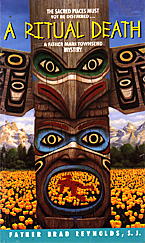

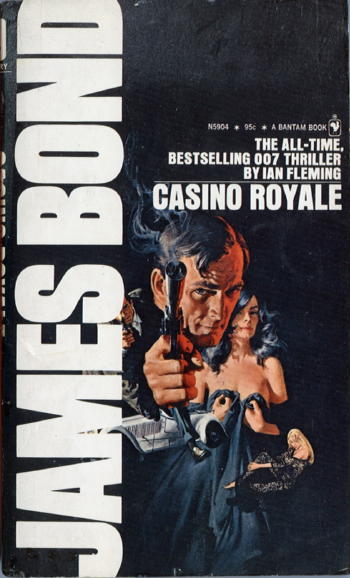
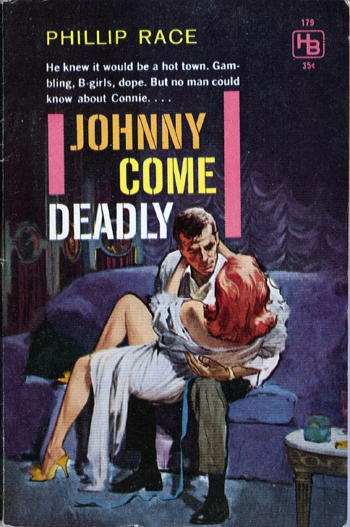
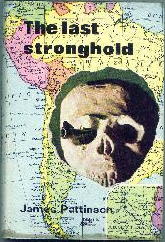
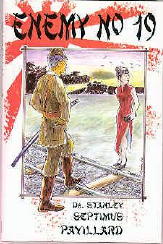

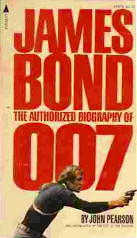

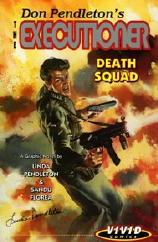


 In swift succession, three men — all leading citizens of the little California coastal town of Lazy Hook — vanished without a trace. All three had been connected with the late Spencer Van Dyke, eccentric millionaire, who though he died of natural causes had managed to surround his death with many-sided mystery. What had Spencer Van Dyke done with the huge sum of cash withdrawn from his bank shortly before his death? What was the meaning of the fantastic poem he caused to be engraved on his marble gravestone? Why had he bequeathed the vast and dilapidated Van Dyke mansion to his hermit butler? Had he come from beyond the grave to spirit away Lyman Hobbs, his undertaker, Henri Picard, his lawyer, and Peter Ramsey, the local editor?
In swift succession, three men — all leading citizens of the little California coastal town of Lazy Hook — vanished without a trace. All three had been connected with the late Spencer Van Dyke, eccentric millionaire, who though he died of natural causes had managed to surround his death with many-sided mystery. What had Spencer Van Dyke done with the huge sum of cash withdrawn from his bank shortly before his death? What was the meaning of the fantastic poem he caused to be engraved on his marble gravestone? Why had he bequeathed the vast and dilapidated Van Dyke mansion to his hermit butler? Had he come from beyond the grave to spirit away Lyman Hobbs, his undertaker, Henri Picard, his lawyer, and Peter Ramsey, the local editor? The very first reader of this book, when it was in manuscript form, started his report with this sentence: “This is a book that I don’t think you should get away from you.” We feel that the readers of the finished book will feel the same way about it.
The very first reader of this book, when it was in manuscript form, started his report with this sentence: “This is a book that I don’t think you should get away from you.” We feel that the readers of the finished book will feel the same way about it.